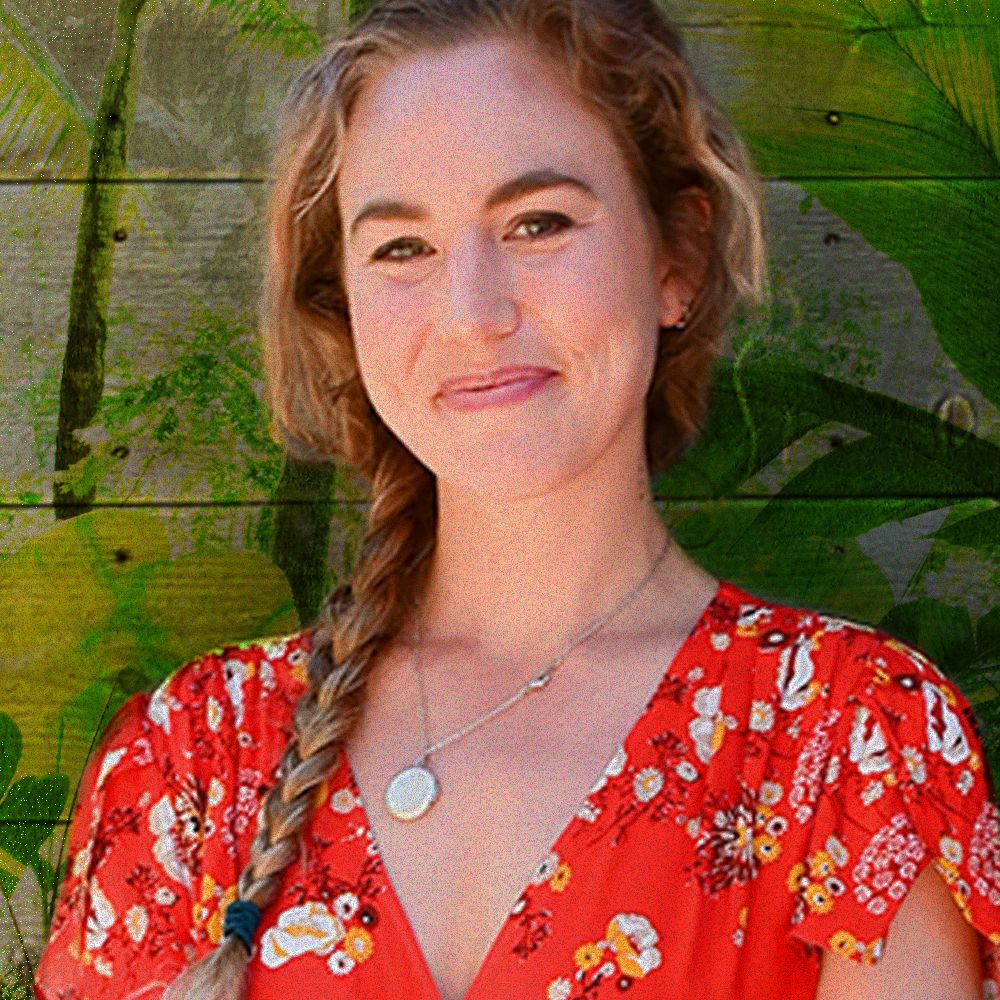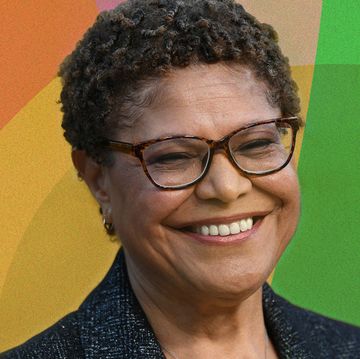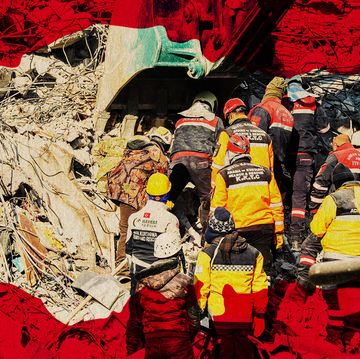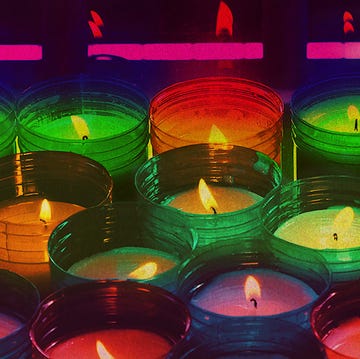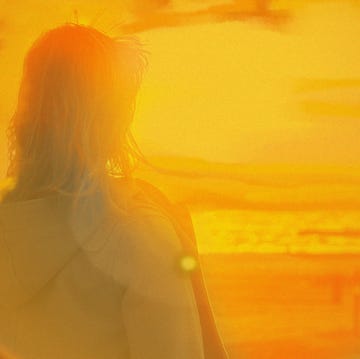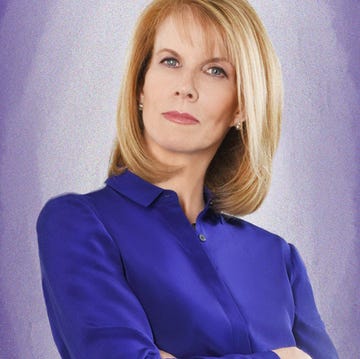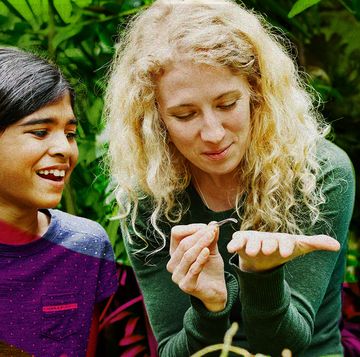Samantha Zwicker doesn’t recommend a “just go out and do it” approach to wildlife conservation, even if that’s the way that she began. Zwicker, who prefers to be called Sam, was born and raised on Bainbridge Island outside of Seattle, but for the last near-decade she has called the Peruvian Amazon her home away from home.
Echoing Jane Goodall’s chimpanzee conservation efforts in Tanzania in the 1960s, Zwicker, 30, is a Ph.D. candidate at the University of Washington who has turned her fierce love of animals into a meaningful career rescuing hundreds of wild animals and fighting to preserve more than 7,000 acres of rain forest.
In January 2015, Zwicker founded the wildlife rescue and rehabilitation center Hoja Nueva in the Madre de Dios region of southeastern Peru. She is co-director of the operation and employs dozens of locals at what she says is an extremely competitive pay rate in hopes of incentivizing a more conservation-based economy. The Peruvian NGO and United States not-for-profit Hoja Nueva (which means “new leaf”) also has an education arm, a research arm, and a conservation arm, with veterinarians on staff and rescue missions happening regularly. Together with the local community and co-director Dylan Singer, Zwicker has managed to navigate uncharted territory in the conservation space — protecting endangered small and medium-size neotropical wildcats.
Now she; Hoja Nueva; her former partner Harry, a war vet suffering from PTSD; and their very first orphaned ocelot are at the center of a tearjerker of a documentary from Prime Video called Wildcat, which recently premiered on the streaming platform.
Though the film focuses heavily on Harry and his mental health issues, along with his reintroduction efforts with an orphaned ocelot (which, per documentation, had never been done before in the wild) named Khan, it was Zwicker’s organization that provided a landing pad for Harry when he needed it most as it guided him in the scientific documentation of ocelot rewilding. The film touches on Zwicker’s groundbreaking work in wildcat rehabilitation, but Shondaland wanted to get more details on who this inspiring young woman is and what she’s managing to accomplish in this emerging field of Peruvian conservation efforts. Note: Spoilers from the film follow.
VALENTINA VALENTINI: There’s a moment in the film when you say that there was no blueprint for reintroduction plans after a baby ocelot has been orphaned, and that you just had to figure it out as you went along. Did you have anyone at all to help guide you through this uncharted territory?
SAMANTHA ZWICKER: I did have a couple of mentors. I talked to the people who run the wildcat group of the IUCN [International Union for Conservation of Nature], and I talked to one of the lead biologists in all of South America, Dr. Renata Leite Pitman, who worked with cats and dogs, who straight up told me, “If you want that cat to be wild again, you’re going to have to do it, and I can help you with little bits and pieces, but it’s not been done before.” People have done it nonchalantly — a cat comes in and out for a couple months, and then maybe they go off, or maybe they become a pet forever. But it hadn’t been documented and done in a scientific and rigid way. So, some people were able to give advice, but there was very little to go off of, and it was a lot of instinct.
VV: So, you’re the first person ever to reintroduce a wildcat into their natural habitat?
SZ: No! No, not any wildcat. Specifically, a jungle cat. It’s not been with medium and small cats, but it has been done with big cats — people have reintroduced cheetahs, for example, and there are instances of large wildcat reintroduction from other parts of the world, but in the Neotropics, specifically the Amazon, it hasn’t been documented before Keanu [their second baby ocelot rescue].
VV: What has it been like to pioneer this type of work there? Are people recognizing you for it? Are you feeling like you’re getting somewhere and making progress, or is it still really difficult to put a dent in it?
SZ: It’s a mix of both, I would say. It’s very painful, if I’m honest. I guess maybe more so for people like me who just feel a lot. When you go through things and it’s like, maybe we didn’t do this part right, but we can do it this way next time. … It’s hard to go through that.
Overall, we’ve seen progress; the government has seen progress. They’re very supportive of us, and they’ve started sending us cats from all over the country. Animals in general, but mostly cats, and with this goal of not having them end up in zoos, which was what was happening a lot. That part of me feels really great. And the number of cats that we’re receiving has gone up from maybe one a year to five or six a year, and we’re getting them from all over Peru. So, obviously, our work is being recognized. People are calling us when they need help, and that feels like you’re doing good. But on the other hand, we get cats that have been pets for four years sometimes, and you work with them for maybe six months and just realize it’s not possible, that there’s too much psychological damage, and they’ve been habituated too much. That’s really sad to see.
VV: There seems to be quite a mix of footage throughout the film — cell phone, cameras, sometimes it’s self-filmed, sometimes it’s clearly being shot by a filmmaker. How did that all work?
SZ: It was a mix of things. When we first got involved with [directors] Trevor Frost and Melissa Lesh, it was supposed to be a short doc about Khan. But when we rescued Keanu, I called them and told them that we had rescued our second baby ocelot, and that’s when they wanted to turn it into a feature-length documentary. They would come down and train us on cameras and leave them with us. Because they knew that they couldn’t have access to Keanu, that was necessary to get that footage. At that point, Khan had passed, and Harry and I had taken all of that footage from Khan’s life on our own phones, and the filmmakers were interested in the first place because of that archival footage.
VV: How did you end up where you are today? Was it all leading toward this?
SZ: I grew up on Bainbridge Island just outside of Seattle. My parents went there about 40-plus years ago when it was all still forest and worked as woodcutters for a living. My dad became a builder. Growing up, school was always important to me. I don’t know why, necessarily, but I was one of those kids who just loved going to school and loved learning. I realized that I loved biology, even though I wasn’t that good at it, to be fair, so I decided to go to school for zoology and biology. I wasn’t exactly sure what I wanted to be — had thought about being a veterinarian, but some of my experiences led me to believe that probably wasn’t the best idea. I got a couple of great internships with habitat restoration, which I think was helpful in forming my ideas around the overall landscape of restoration and wildlife rewilding; I also interned at a zoo for quite a while in the conservation department, learning how they function as a business and how maybe I wasn’t meant for that either. Basically, I found all the things that I probably shouldn’t do.
VV: Well, I think that’s a great way to find out what you should do. And apparently for you, that’s running an NGO wildlife conservation and rehabilitation center …
SZ: It’s been a process. On my first trip to Peru in 2014, I interned with the wildlife portion of a larger policy study, and I really, really loved it. I started out in the mining areas, which opened my eyes to the destruction. And then I was able to visit this place called Las Piedras, which is where I am now and is this insanely beautiful, rich, wild place that a lot of people haven’t been to. It’s relatively untouched — there are pieces of forest that no one’s ever stepped foot into, essentially. I became very interested in the wildcats that lived here, and that’s what got me interested in doing a study. I decided I wanted to do my master’s research here, and long story short, I ended up coordinating and living with the local community. They were selling pieces of their land to different members of their community, and I’d been living there for about a year at that point, so they offered to sell me a patch. I got my little 30 hectares of land …
VV: Little?! Isn’t one hectare like two-and-a-half acres?
SZ: Yes! Thirty hectares is huge in the States, but here it’s like a normal, smallish size of agricultural land. I bought it for $900 because it was basically gifted to community members. And I knew right away I wanted to make it into a community center with a research facility, and it all snowballed from there. I wanted to have the 501c3 part in the States so that I could raise donations as I knew that wasn’t something that I could get off the ground in Peru quite yet. I had a lot of people in Bainbridge help in the early days. Some of my teachers from high school have been the biggest supporters of Hoja since the very beginning.
VV: And you’ve been rescuing all sorts of animals since then?
SZ: The official rescue center — the Khan ReWilding Center — wasn’t founded until 2020, and finished construction in 2021, which is after when the film was shot. During the film, you see us working with the government, and that’s because the local department didn’t have a lot of options for some of these animals, especially carnivores. We got what were called temporary custody permits, and we worked with the government on a smaller level back then, but now we have more than 60 animals at any given time, and we do take all species, and specialize in cats.
VV: In the film, you mention that the U.S. makes it hard for conservation work. Can you expand on that?
SZ: Growing up, I loved wolves so much, and I thought that I was going to work in wolf conservation. At the end of the day — and it was actually more so that academia made it so that I couldn’t really ever get there — I never got the opportunities that I wanted, never got the grant I needed, didn’t get into the lab that I wanted to get into. It just didn’t work out for me through the academic route. What worked out for me was just kind of paving my own way — which is not something I necessarily recommend because it has been so hard [laughs].When people reach out to me to tell me that they really love this or that type of work, but that no one will accept them into their lab or they don’t have money to support themselves academically, and they ask if they should just do what I did and go set up somewhere and start helping from the ground up … it’s just not something I generally recommend.
VV: So, how does that relate to the U.S. being difficult for getting conservation work off the ground?
SZ: It can be very bureaucratic. It can be here, as well, but in Peru we have a little bit more freedom to still explore and to educate. In the States, we already know a lot. There are so many things about the systems here in the lower Peruvian Amazon that we don’t know about — how people are affecting wildlife in different ways or how they’re adapting in different ways, and how we can use that information. Here, there’s just so much more room for saving what’s still wild, I guess, while also raising that level of awareness and creating change through research.
VV: Meaning we’re past that point in the States.
SZ: Yeah, we are. That level of destruction, we’re beyond saving the wild spaces. I mean, we do have huge wild spaces, some of which we’ve restored, like parts of Yellowstone are somewhat in their natural state or past state. But besides the really high mountains in some of the areas we can’t access in the States very well, there’s not much that looks like it used to.
VV: Much of the film focuses on Harry’s depression and suicidal ideations. And they became very serious. You have your own trauma that you were dealing with too. Looking at the film and looking back, what are your thoughts about seeing that part of your life and the life of a loved one on-screen?
SZ: The film does a pretty good job of showing Harry’s journey, like you said. But it’s hard to fit everything that happened into the length of a feature film. The segment at the end where there are clearly a lot more issues and we’re fighting and decide that Harry needs to go get professional help —we as a team were worried and wanted Harry to go and get help for many, many months. It wasn’t an overnight thing, but that isn’t made super-clear. Unfortunately, when you have someone in that situation where they truly believe that everything they have in the world is this one animal, they’re not going to leave. You see a little bit of that struggle in the film, and [it] definitely took a toll on our entire team. It was a lot. It can be really triggering to look back on, I guess.
VV: And how are you doing now?
SZ: A lot of time has passed. The hardest part for me was trying to do what was best for him. Our relationship completely fell apart; we never spoke again, and we still haven’t. And that’s a good thing in a lot of ways because he never did go and get help. Everything that I hoped for him didn’t end up happening. It seems like he’s happy now, and he’s moved on, but it took me three months of very intensive EMDR therapy to move on, to move forward with my life and realize what was important to me and how to focus on me after focusing on someone else for so long. I know the level of effort that I had to put into readjusting everything about myself after being ripped apart.
Having the partner that I do now, Dylan, is super-helpful. My family have always been so close; we understand each other without even having to speak, and I found that in a partner too. He understands the way I react to things, the way I do things. I think healing depends a lot on who you surround yourself with.
Valentina Valentini is a London-based entertainment, travel, and food writer and is also a senior contributor to Shondaland. Elsewhere, she has written for Vanity Fair, Vulture, Variety, Thrillist, Heated, and The Washington Post. Her personal essays can be read in the Los Angeles Times and Longreads, and her tangents and general complaints can be seen on Twitter at @ByValentinaV.
Get Shondaland directly in your inbox: SUBSCRIBE TODAY
